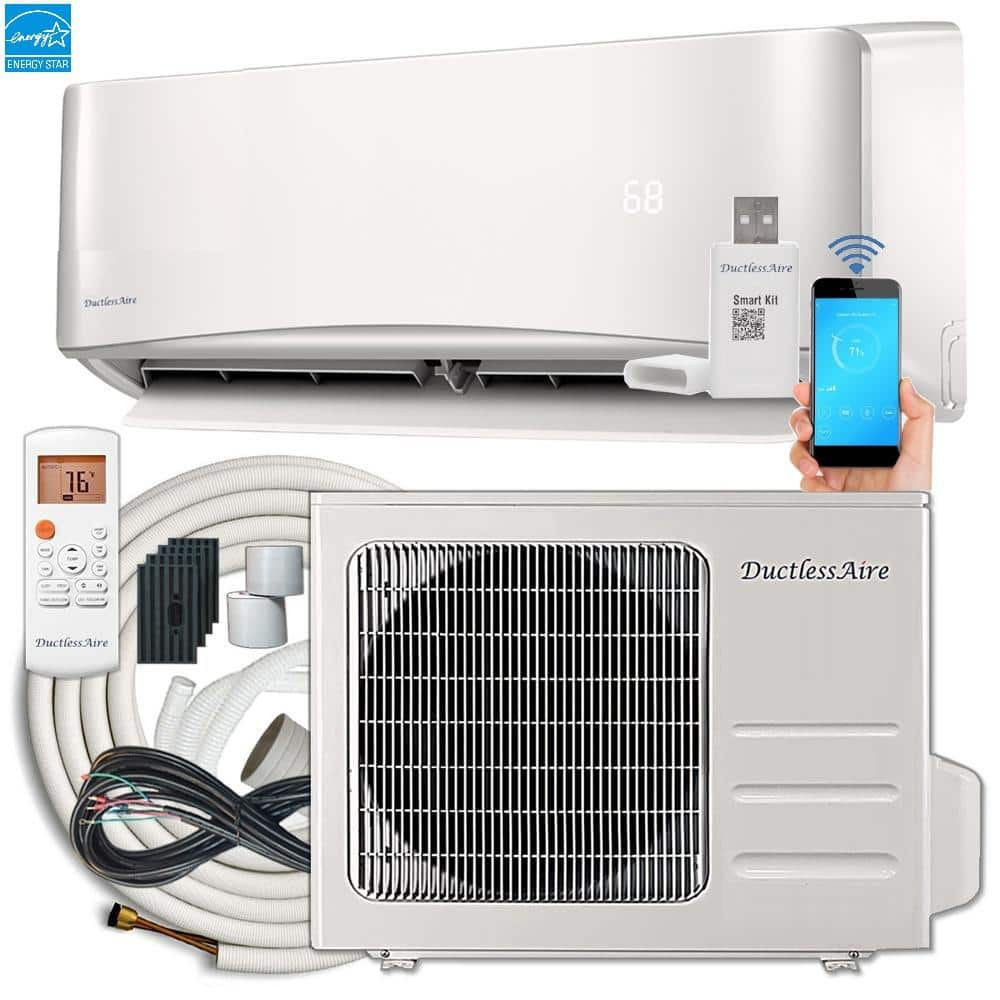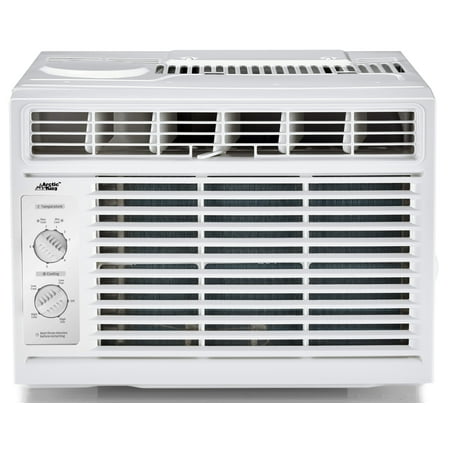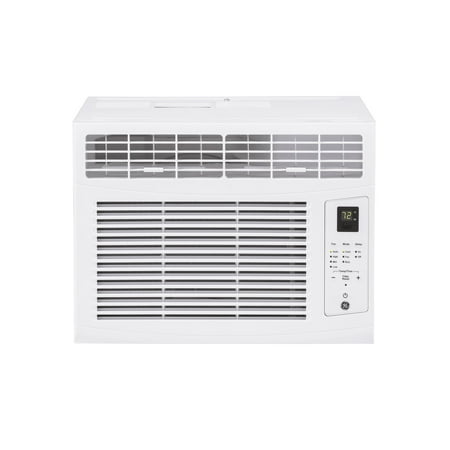DuctlessAire 21 SEER 24,000 BTU Wi-Fi Ductless Mini Split Air Conditioner and Heat Pump Variable Speed Inverter – 220V/60Hz
Energy Star 20.5 SEER Yields Ultra-High Cost Efficiency. Wi-Fi module included. Equipment should be sized/installed by a qualified professional.
Keep your home comfortable with this DuctlessAire 24,000 BTU 2 Ton 21 SEER AHRI and Energy Star Certified DuctlessAire Mini Split Air Conditioner with variable-speed DC inverter compressor. This efficient unit installs without ductwork in open rooms up to 1200 sq. ft., like classrooms, sunrooms, open floor plan flexible-use spaces, man caves, home theaters, offices, studios, bedrooms, bonus rooms over the garage and even basements and garages. This sleek mini split mounts to the wall and only requires a small hole to run the lines to connect to an exterior condenser. Powerful fans deliver constant airflow for all-year temperature comfort and can be adjusted with the included remote.
- 20.5 SEER rating Energy Star certified: estimated national average annual operating cooling cost is $148 based on AHRI certificate #9150140
- Package includes stylishly designed interior white wall-mount air handler with LED display, exterior pre-charged condenser with special golden anti-corrosive coating coils, wireless remote control for customizable airflow and temperature adjustment and 25 ft. complete kit
- 25 ft. kit includes copper tubing with insulation and nuts, control wire, 6 ft. drain hose, wall sleeve, wall sleeve cover and tape
- Electroplated coils withstand the effects of salty air, rain and other corrosive elements by allowing contaminated water on the coils to run off more quickly
- Special built-in low ambient kit can be used in temperatures as low as 5 deg. F for cooling operation
- Refrigerant leak detection will alarm when a refrigerant leak is detected
- By switching to remote sensor and keeping the remote close to you, the air conditioner sets the temperature from the remote’s location
- Includes one HEPA filter that traps harmful particles such as pollen, pet dander, dust mites and tobacco smoke
- In cooling mode the air vane opens counterclockwise to direct air horizontally for an even cooling effect; in heating mode the air vane opens clockwise, directing air downward for a uniform heating effect
- Built-in electronic diagnostic monitors abnormal operations or parts failures
- Heating belt is fitted on the base plate of the outdoor unit to avoid accumulation of rain, snow or water on the base plate
- Dual washable filters remove most pollen dust, smoke and other microscopic airborne particles
- Automatically clean the evaporator to reduce buildup of bacteria and keeps the air fresh
- Sleep mode decreases heating or increases cooling by 1 deg. per hour for the first 2 hours of use, then holds the temperature steady for 5 hours
- Large-diameter cross flow fan can bring down the indoor unit noise level by lowering the fan speed
- Anti-cold draft warms up prior to fan operation to prevent cold air in heating mode
- Louver position memory stored by microcomputer
- Turbo mode enables the unit to reach the preset temperature in the shortest time
Additional information
| Air handler depth x height x width (in.) | 8.9 x 13.19x 42.52 |
|---|---|
| Condenser depth x height x width (in.) | 16.14 x 31.89 x 37.24 |
| Certifications and Listings | ETL Listed |
| Manufacturer Warranty | 5/1 year Compressor/Parts (Registered) |
| Seasonal Energy Efficiency Ratio (SEER) | 20.5 |






by Steve
The install was completed by my HAVC guy and said it was very easy. He measured outside unit only pulling 1.2amps which means this will be very efficient to run. Furthermore the inside unit is extremely quiet. When I first walked up to it I did not even notice it running. Overall a good purchase. By Jim M
by Michael
We purchased the 12,000 BTU unit after enclosing our front porch. We needed something that would keep it cool in the summer and warm in the winter so we could use it year round. This is perfect! Easy to use, set the thermostat and forget it. Its very quiet, most of the time you just forget its on. And it is sleek looking, not too intrusive in the room. Very happy with the purchase.
by Donald
Keeps 1000sqft at 68 deg in Florida with no issues at all. Had issues bending copper tubing, but was realistically my fault as I didn’t have a tubing bender of any sort.
by Dan
Unit works well, very quiet operation. Does heat and cool a good size space very well. The controls on the remote work very slow, can be a little frustrating at first getting used to it. But overall unit seems to be great so far. Easy install if you know what you are doing and have a solid plan for it.
by John
It was easy to install and puts out plenty of heat. The AC was only used once since it has not been hot yet. My only complaint is that the Home Depot authorized installer wanted $6300 to install a different unit since they don’t use the Ductlessaire system. I purchased the unit directly from Home Depot for $1400 and installed it myself and only needed a friend to evacuate the system before charging. They wanted to charge me $6300 for 4 hours of work.
by Jan
Cooled my garage with ease, absolutely love the WiFi feature. Thank you Ductless Aire!
by Alex
Cooled my garage with ease, absolutely love the WiFi feature. Thank you Ductless Aire!